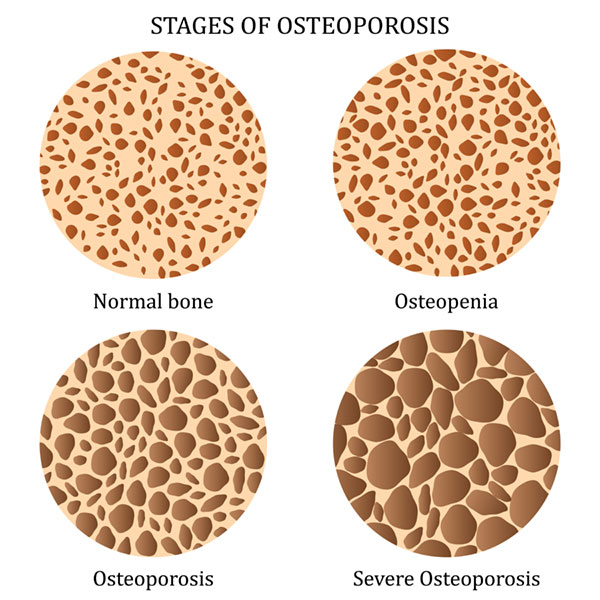Links Between Gum Disease and Osteoporosis
Experts say that periodontal disease can affect the bones, particularly in older individuals—and especially in women. Periodontal disease involves the inflammation of the gums below the gum line, and this disease causes loss of the bone that supports the teeth. Osteoporosis is also characterized by bone loss—specifically, the thinning of the bone and a loss in the bone’s density throughout the body over time.
With osteoporosis, the body either absorbs too much existing bone or does not form an adequate amount of new bone. People with osteoporosis therefore are more prone to breaking their bones if they fall.

Causes
A lack of estrogen accelerates bone loss in the mouth and in other areas of the body. It also speeds up the loss of tissues and fibers that keep the teeth in place. Although a drop in estrogen levels can cause osteoporosis in women, a reduction in testosterone can also cause this problem in men.
Effects
Research shows that post-menopausal women who have osteoporosis are 86 percent more likely to have periodontal disease as well. Research also shows that anyone with a history of periodontal disease or osteoporosis can expect to experience accelerated bone and tooth loss.
When an osteoporosis patient experiences decreased bone mineral density, this causes loss of the jawbone. This oral bone loss also changes how the periodontal tissues respond to plaque—the sticky substance that forms on a person’s teeth when he/she eats food.
Oral Care
Experts have discovered that people with osteoporosis can decrease their tooth loss simply by managing their periodontal disease well. This is why it is imperative that people with osteoporosis practice good oral hygiene and visit their dentist regularly to prevent or control periodontal disease.
